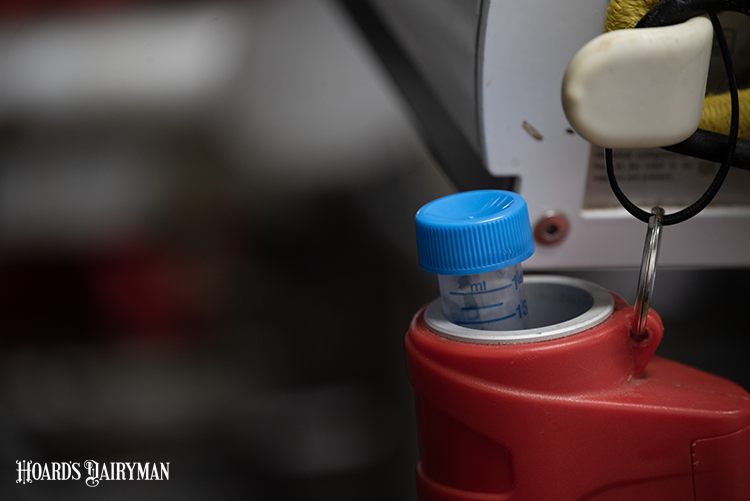
“Forward thinking will make the artificial insemination process go smoothly and allow us to retain the fertility inherent in the straws we purchase to generate those pregnant cows and heifers we want and need for our business,” said Joe Dalton during the December Hoard’s Dairyman webinar. Dalton, a professor and dairy extension specialist at the University of Idaho, laid out the steps that help get cows bred.
1. Maintain an accurate semen inventory. Dalton said this could be taped to the wall or stored electronically on a phone or computer.
2. Restrain the animal that will be receiving the artificial insemination.
3. Locate all the needed breeding items. These could be stored in the back of a truck, a utility vehicle, or in a farm office. This will help avoid wasted time looking for materials during the breeding process, Dalton said.
4. Check the water bath temperature to ensure it is between 95°F and 98°F.
5. Using tweezers, work below the frost line of the storage tank to remove the needed straws.
6. Thaw semen in warm water, between 95°F and 98°F, for 45 seconds.
7. Remove the straw and dry it thoroughly. “It is very important that straws are dried as we know that water will damage and kill sperm,” Dalton said.
8. Cover the straw to avoid exposure to the environment.
9. Load the straw into a warmed gun and cut the crimped end of the straw.
10. Place the sheath over the assembled gun and secure it.
11. Place the gun close to the body to maintain temperature or use a battery-operated gun warmer.
12. Pull on a sleeve, use lube, and bring paper towels.
13. Insert the arm into the rectum and wipe the vulva clean with paper towel.
14. Insert the gun into the vagina, manipulate the cervix, and deposit semen into the uterine body.
15. Keep accurate records, including the date of insemination; the cow, bull, and technician identification; and if the cow was inseminated after heat or timed A.I.
16. Perform routine pregnancy and open checks on all animals. “Do this so we can have data relative to our success in generating pregnancies and how to manage open animals so we can get them in calf,” Dalton noted.
“Many factors play a role, but I would argue that every successful A.I. program begins with proper semen handling,” Dalton said. His four keys to appropriate semen handling include time, temperature, hygiene, and skill.
To learn more, watch the December Hoard’s Dairyman webinar, “Back to the basics: Semen handling and tank management.” This webinar was sponsored by Select Sires.








